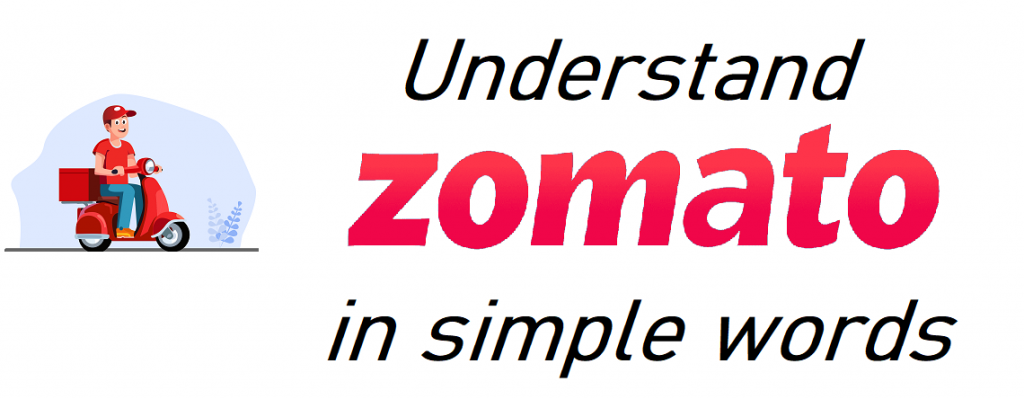
Zomato is a food delivery service that picks the food from a restaurant and delivers it to people like us.
Quick facts about Zomato
- Founded by Deepinder Goyal and Pankaj Chaddah in July 2008
- Headquarters: Gurugram, Haryana, India
- Services: Food delivery
- Website: zomato.com
- Zomato was inspired by a bad pizza order placed by founder Deepinder Goyal.
What business problem did they solve?
Before Zomato, each restaurant that offered food delivery service had to keep its own in-house delivery agents and provide them with bikes. These in-house delivery agents were idle most of the time, causing undesirable overhead costs. The salary of these in-house delivery agents and the cost of maintaining bikes resulted in reduced profits for the restaurant owners.
Zomato solved this problem by offering a shared food delivery service. Just a few delivery agents from Zomato could service several restaurants in the area. Now the restaurants did not need their expensive in-house delivery agents. Even though Zomato charges small fees from the restaurant for each order, this cost is far less than keeping in-house delivery agents.
For example: If 10 restaurants in your area kept a total of 20 in-house delivery agents, Zomato could possibly serve those 10 restaurants using just 5 delivery agents.
The convenience of placing the order on Zomato has resulted in a lot more food delivery orders for restaurants. Not just that, several restaurants that could not provide food delivery option earlier can now do it by using Zomato.
Other benefits include:
Zomato provides food-quality ratings for each restaurant (5-star, 4-star ratings left by previous customers like us). New customers can avoid ordering food from restaurants that have a lower rating.
Zomato provides several payment options to consumers. People can pay by Cash on delivery, Credit card, Debit card, Net banking and Wallets like PayTM.
The menu of various restaurants can be seen on the Zomato app itself. So there is no need to retain paper-based menus anymore.
Who are their key partners?
Restaurants and Delivery Partners.
Who are the consumers? How can they use their service?
Customers like us who want food from a restaurant to be delivered home are Zomato’s consumers. Consumers can order through Zomato’s mobile app, website or phone.
How does Zomato make money?
- Commission (or a cut) is charged from restaurants for each order.
- Zomato also charges a delivery fee from consumers like us each time we order something.
- Some restaurants pay extra money to Zomato so that they appear on top of search results (or on the first page). These are called Premium or Sponsered listings. For example, there may be 30 restaurants offering pizzas in your area, but when you search for “Pizza” on Zomato, you will most likely order from the first few restaurants listed on the app, and not go all the way down to the 30th restaurant. Therefore, some restaurants pay extra money to Zomato to appear on top, resulting in more Pizza orders for them.
- Zomato also offers premium membership to consumers. So if we buy premium membership by paying Rs. 200 to Zomato, they will deliver our food faster for the next 3 months. Some other benefits may also be offered to premium customers, like charging a lower delivery fee.
How did Zomato make its service so popular? (also called the Advertisement Strategy)
By running Ads on Newspapers, TV and on the Internet. They also advertise on large hoardings near roads and popular markets. By maintaining high-quality service they also rely on word of mouth advertising ( People telling their friends and relatives about how much they like Zomato).
What are the main costs of Zomato?
- Salary of delivery agents and cost associated with their bikes.
- Advertising costs.
- Software/IT costs – Cost of making and upgrading Mobile App and website.
- The salary cost of other support staff, like customer service agents.
- Infrastructure cost – Like rent of those buildings where Zomato offices are located.
Can you guess where did so much money come from to build this business?
In a typical business, initially, the founders put in their own money. If more money is needed, they raise money from Venture Capitalists ( VC’s) by offering a share in the company. More money can be raised by floating the company in the stock market. ( Zomato started its IPO on 14 July 2021 )
What are their business risks?
- Competition from other providers like Uber Eats and Swiggy.
- Huge risk if Zomato repeatedly delivers low-quality food or if the food is not delivered on time.
If a customer gets upset, how can they handle it? Any guesses?
Do not charge if the wrong food was delivered. Or give a 50% refund. Or provide a discount coupon code for the next order. Plus an apology.
To maintain quality and transparency, what can they do?
- Make sure that restaurants maintain the quality of food. Remove restaurants from the platform which have a high complaint rate.
- One of the great features I like is the ability to track the location of the delivery agent.
How much profit does Zomato make annually?
At the time of writing this article, Zomato posted a loss of $110 million. It has never made money to date. However, most large ventures like Zomato remain as a loss-making entity during the initial phase. They become profitable over time.


